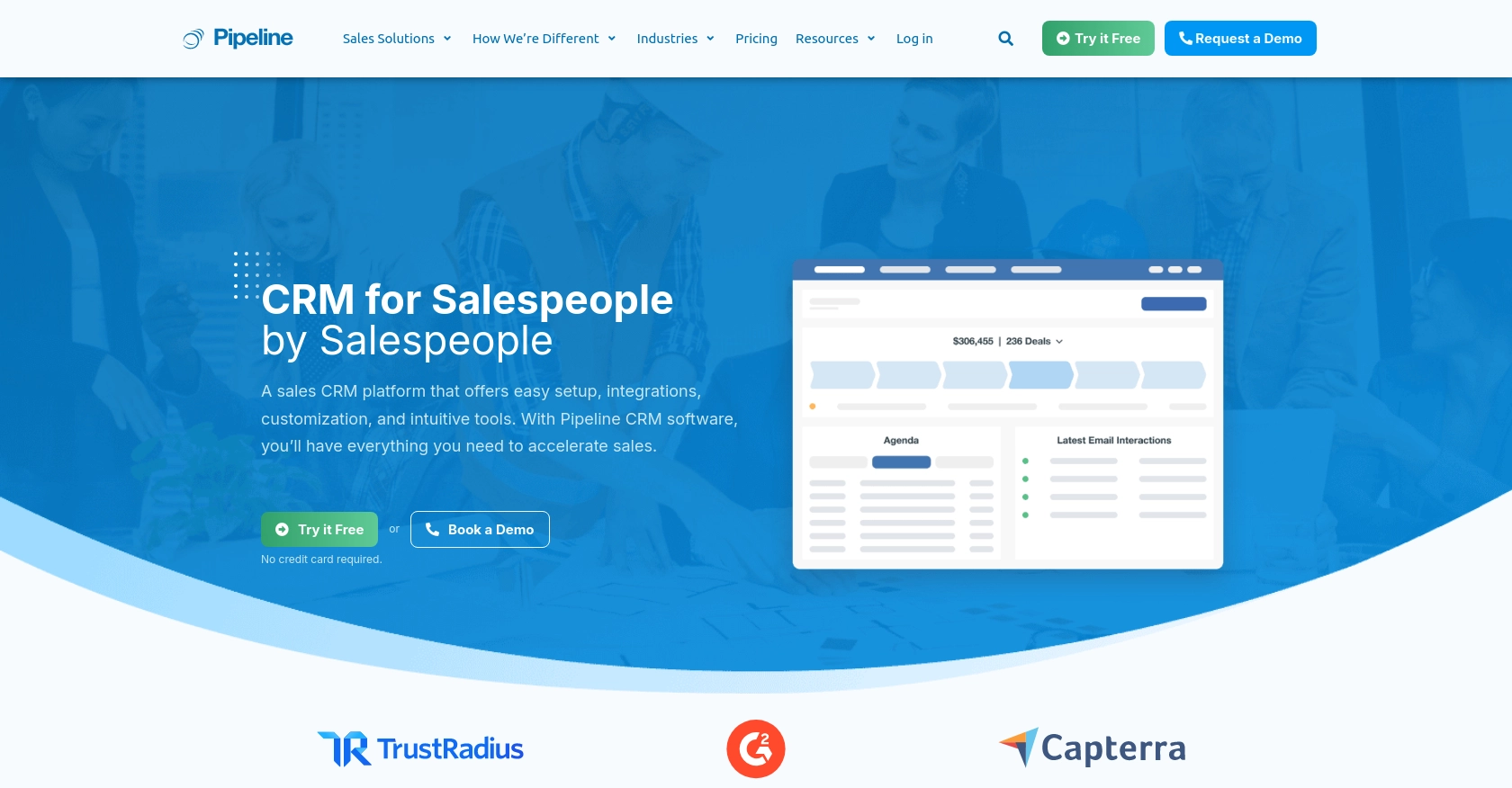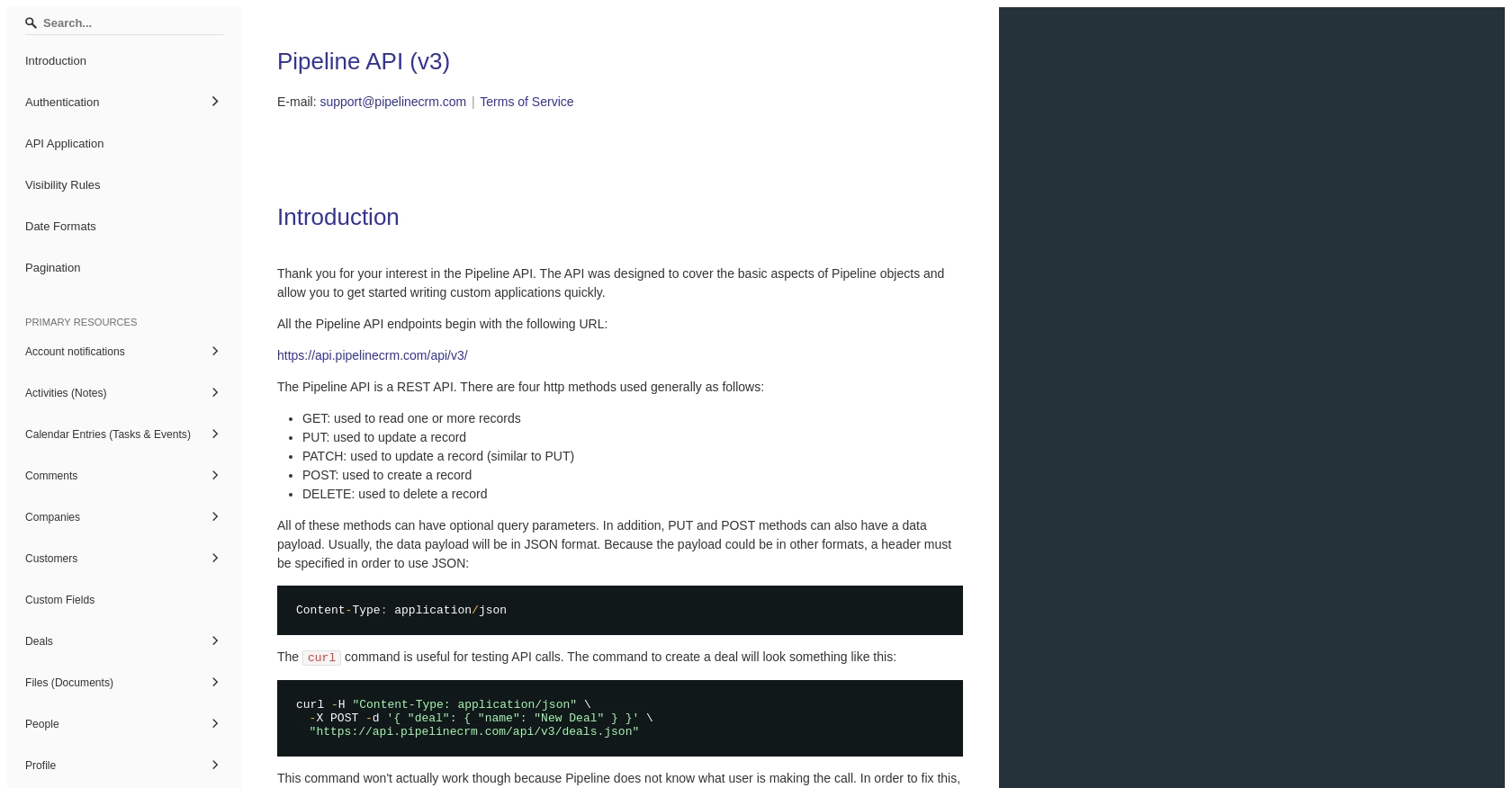How to Get People with the PipelineCRM API in Python

Introduction to PipelineCRM
PipelineCRM is a robust customer relationship management platform designed to help businesses streamline their sales processes and manage customer interactions effectively. With its user-friendly interface and powerful features, PipelineCRM enables sales teams to track leads, manage deals, and nurture customer relationships efficiently.
Integrating with the PipelineCRM API allows developers to access and manipulate customer data programmatically, enhancing the automation of sales workflows. For example, a developer might use the PipelineCRM API to retrieve a list of people associated with a particular sales pipeline, enabling the creation of custom reports or dashboards that provide insights into sales performance.
Setting Up Your PipelineCRM Test Account
Before you can start interacting with the PipelineCRM API, you'll need to set up a test account. This will allow you to safely experiment with API calls without affecting any live data.
Creating a PipelineCRM Account
If you don't already have a PipelineCRM account, you can sign up for a free trial on their website. This trial will give you access to the features needed to test API interactions.
- Visit the PipelineCRM website.
- Click on the "Sign Up" button and follow the instructions to create your account.
- Once your account is created, log in to access your dashboard.
Generating Your PipelineCRM API Key
PipelineCRM uses API key-based authentication to secure API requests. Follow these steps to generate your API key:
- Log in to your PipelineCRM account.
- Navigate to the "Settings" section in the dashboard.
- Find the "API" tab and click on it.
- Click on "Generate API Key" to create a new key.
- Copy the generated API key and store it securely, as you'll need it to authenticate your API requests.
For more detailed information, refer to the PipelineCRM API documentation.

sbb-itb-96038d7
Making API Calls to Retrieve People Data from PipelineCRM Using Python
To interact with the PipelineCRM API and retrieve people data, you'll need to use Python, a versatile programming language known for its simplicity and readability. This section will guide you through the process of setting up your Python environment, making the API call, and handling the response.
Setting Up Your Python Environment for PipelineCRM API Integration
Before making API calls, ensure you have Python installed on your machine. This tutorial uses Python 3.11.1. Additionally, you'll need the requests library to handle HTTP requests.
- Install Python from the official website if you haven't already.
- Use the following command to install the
requestslibrary:
pip install requestsWriting Python Code to Retrieve People Data from PipelineCRM
With your environment set up, you can now write the Python code to make an API call to PipelineCRM and retrieve people data. Follow these steps:
import requests
# Set the API endpoint and headers
endpoint = "https://api.pipelinecrm.com/api/v3/people"
headers = {
"Content-Type": "application/json",
"Authorization": "Bearer Your_API_Key"
}
# Make a GET request to the API
response = requests.get(endpoint, headers=headers)
# Check if the request was successful
if response.status_code == 200:
people_data = response.json()
for person in people_data['data']:
print(f"Name: {person['first_name']} {person['last_name']}, Email: {person['email']}")
else:
print(f"Failed to retrieve data: {response.status_code} - {response.text}")
Replace Your_API_Key with the API key you generated earlier. The code above sends a GET request to the PipelineCRM API to fetch people data. It checks the response status and prints the names and emails of the people if successful.
Verifying API Call Success and Handling Errors
After running the code, you should see a list of people from your PipelineCRM account displayed in the console. If the request fails, the error message will be printed, allowing you to troubleshoot the issue.
Common error codes include:
- 401 Unauthorized: Check if your API key is correct.
- 404 Not Found: Verify the API endpoint URL.
- 500 Internal Server Error: Try again later or contact support.
For more detailed error handling, refer to the PipelineCRM API documentation.
Conclusion and Best Practices for PipelineCRM API Integration
Integrating with the PipelineCRM API using Python offers a powerful way to automate and enhance your sales processes. By retrieving people data programmatically, you can create custom solutions that provide valuable insights and streamline workflows.
Best Practices for Secure and Efficient API Usage
- Secure API Key Storage: Always store your API keys securely, using environment variables or secure vaults, to prevent unauthorized access.
- Handle Rate Limiting: Be mindful of any rate limits imposed by PipelineCRM. Implement retry logic with exponential backoff to handle rate limit errors gracefully.
- Data Standardization: Ensure that data retrieved from the API is transformed and standardized to fit your application's requirements, maintaining consistency across systems.
Enhancing Your Integration Strategy with Endgrate
While integrating with PipelineCRM can be straightforward, managing multiple integrations can become complex. Endgrate simplifies this process by providing a unified API endpoint that connects to various platforms, including PipelineCRM. This allows you to focus on your core product while outsourcing the integration complexities.
With Endgrate, you can build once for each use case and leverage an intuitive integration experience for your customers. Explore how Endgrate can save you time and resources by visiting Endgrate.
Read More
Ready to get started?
